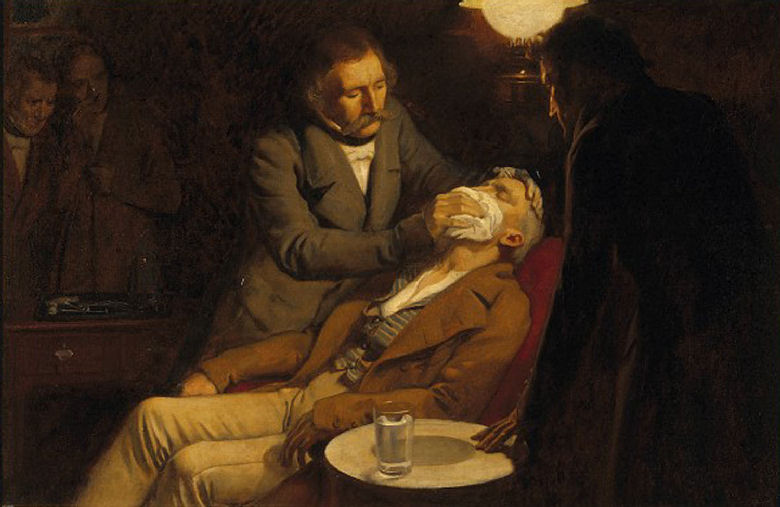313.WHEN WAS ETHER FIRST USED FOR OPERATIONS?
While it still takes plenty of courage to go through with an operation today, just imagine what it would be if there were no anesthetics and you had to suffer every bit of pain! The fact is, before the use of modern anesthetics, every operation brought agony to the patient and frequently death from pain and shock.
Since ancient times, various herbs, gases, oils, and drugs were used in attempts to control pain, but none were completely successful. There is a good deal of controversy about who discovered anesthesia, and the credit is divided.
In 1799 Sir Humphry Davy announced that nitrous oxide (laughing gas) produced unconsciousness. Nineteen years later, another English scientist, Michael Faraday, suggested that ether be used to stop pain.
In 1842 Crawford W. Long, an American doctor, removed a cyst from a patient unconscious from breathing ether, but failed to report his experience. Horace Wells, a dentist in Hartford, Connecticut, used laughing gas successfully while extracting a tooth. In 1846 a Boston dentist, W. T. G. Morton, with Charles Jackson, gave a public demonstration of ether anesthesia at Massachusetts General Hospital, while Dr. J. C. Warren performed an operation. Since this was the first public demonstration of the use of ether, it was probably the most important step in advancing its use.
Today many new types of anesthetics have been developed, but there are two chief classes: general and local. Most general anesthetics are gases which, when inhaled, produce unconsciousness. Examples of this are nitrous oxide, chloroform, ether, and ethylene. Some may be drugs that are injected into the blood stream, such as pentothal.
Local anesthetics work by injecting a narcotic drug either at the site of the operation or as a nerve block to nerves that supply the area.



Leave a Reply